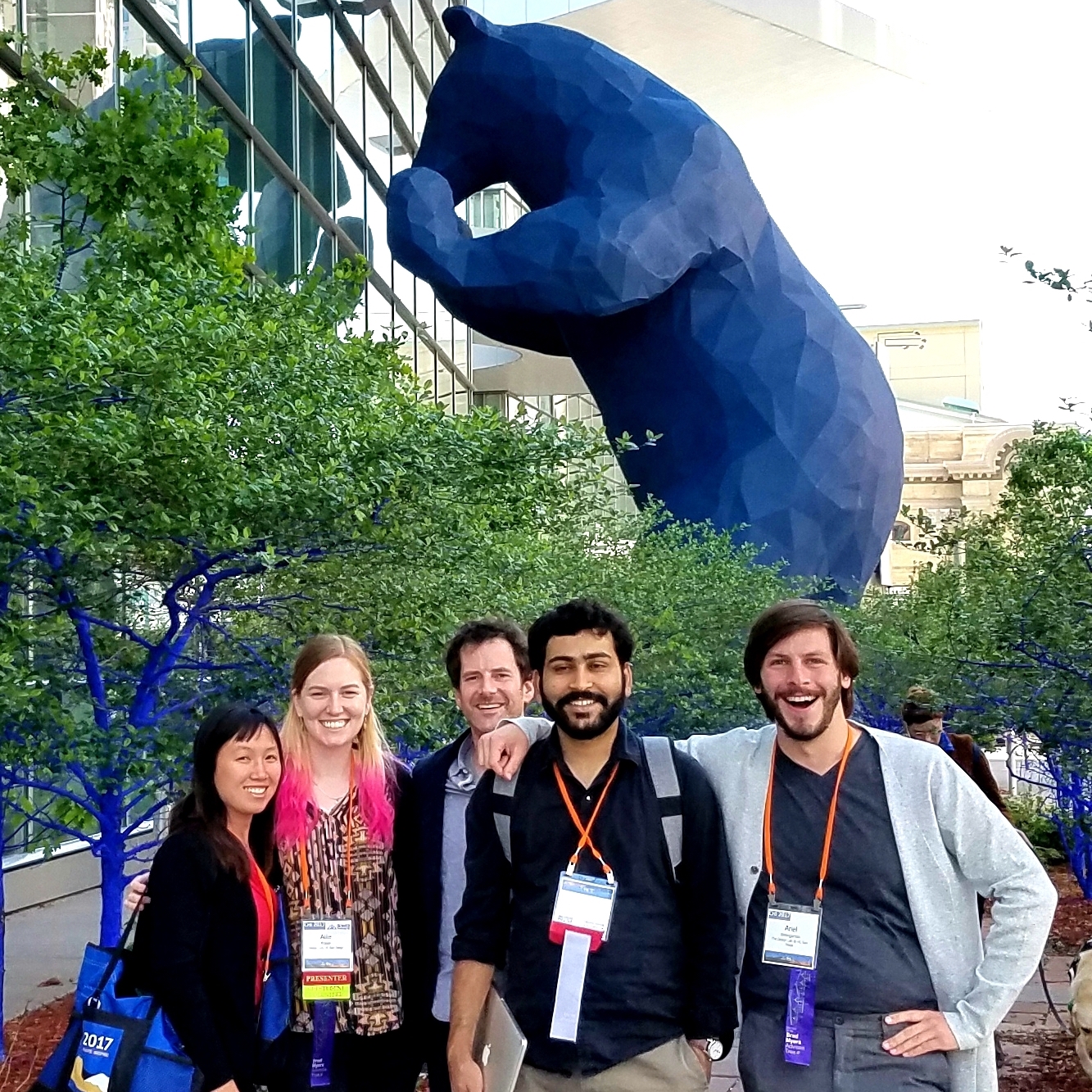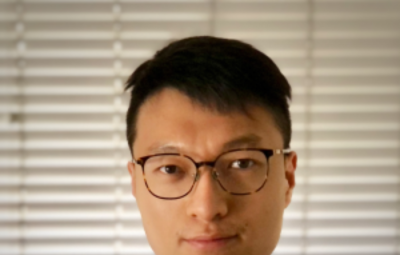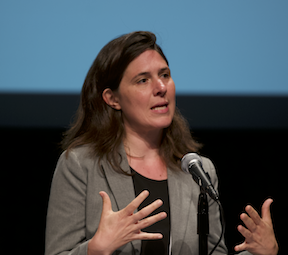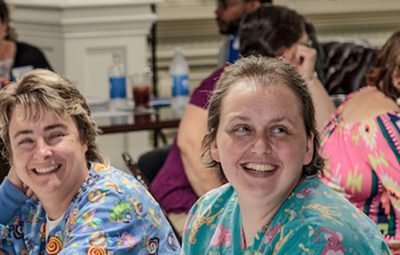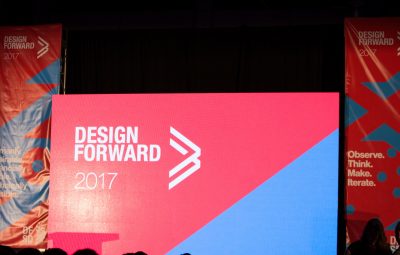In May, many UC San Diego Design Lab members and students swarmed the largest human-computer interaction conference in the world, ACM CHI 2017. Affiliated with ACM SIGCHI, the premier international society for professionals, academics and students who are interested in human-technology and human-computer interaction (HCI), the conference brings together people from multiple disciplines and cultures to explore new ways to practice, develop and improve methods and systems in HCI.
“I love the mix of people at CHI—chatting with people making new sensor technologies, new theoretical approaches, new architectural construction techniques — it has incredible diversity but is still brought together with a common set of ideas and expectations,” said former Design Lab Fellow Derek Lomas, who presented at the conference.
This year, the mega-HCI conference, which was sponsored by tech-industry giants such as Facebook, Google, IBM, Microsoft and Yahoo! was held in Denver near the foothills of the Rocky Mountains. Organizers selected the site, which is full of scenic trees, mountains and valleys to serve as a motivation for the theme of “Motivate, Innovate, Inspire.”
![]() Ailie Fraser (middle)
Ailie Fraser (middle)
While some Design Lab students attended to engage with other researchers and learn, many others presented research. Design Lab Graduate Student Ailie Fraser presented a paper from her summer internship with Autodesk Researchers Tovi Grossman and George Fitzmaurice. The paper, titled WeBuild: Automatically Distributing Assembly Tasks Among Collocated Workers to Improve Coordination, unveils a system for helping groups of people coordinate physical assembly tasks, such as furniture building or construction projects on mobile phones. The system takes in the instructions for a task and uses a distribution algorithm to assign sections to workers in a group.
“CHI was a fantastic experience,” beamed Fraser. “It was my second time attending, and I got the chance to both reconnect with people I met last year and meet more fantastic HCI researchers from all over. The CHI community is a vibrant and exciting group to be a part of.”
![]() Danilo Gasques Rodrigues (second from left) and Nadir Weibel (second from right)
Danilo Gasques Rodrigues (second from left) and Nadir Weibel (second from right)
In addition to Fraser, several other Design Lab members presented and received notable recognition for their work. Vineet Pandey presented his paper on Gut Instinct which is an online system that encourages citizen scientists by teaching them about the gut microbiome and then having them reflect on their experiences and life stories to generate unique insights. Steven Rick presented his work on pervasive sensing technologies in healthcare alongside leaders in healthcare-focused HCI research. Nanna Inie produced a full-scale laser cut poster of her current research that was featured prominently through CHI on social media. Danilo Gasques Rodrigues also presented a poster as late-breaking work at CHI and made some great connections with folks at Microsoft Research who are working on Hololens teams and might turn into some collaborative work with Microsoft in the near future.
But the CHI conference wasn’t all work and no play. Design Lab Graduate Student Vineet Pandey revealed a little known CHI conference secret. “The parties were really good — that’s where all the magic happens,” said Pandey with a smile.
CHI 2018 is set for Montreal, Canada with a theme of “Engage!” boasting of new innovations including a CHI Expo and two new design challenges. Design Lab students are already packing their bags.
![]() Nanna Inie’s full-scale laser cut poster
Nanna Inie’s full-scale laser cut poster
![]() Steven Rick (right)
Steven Rick (right)
